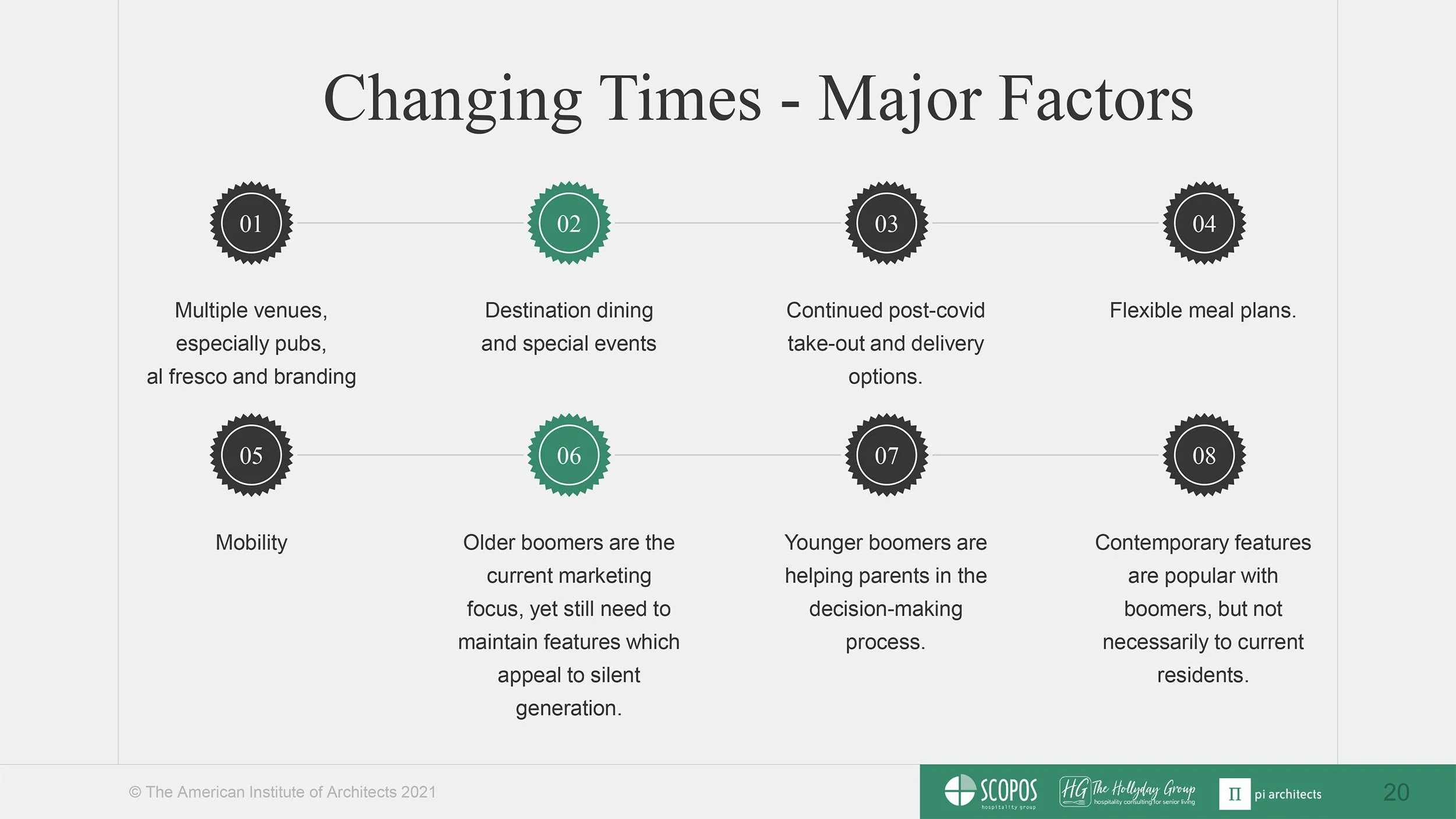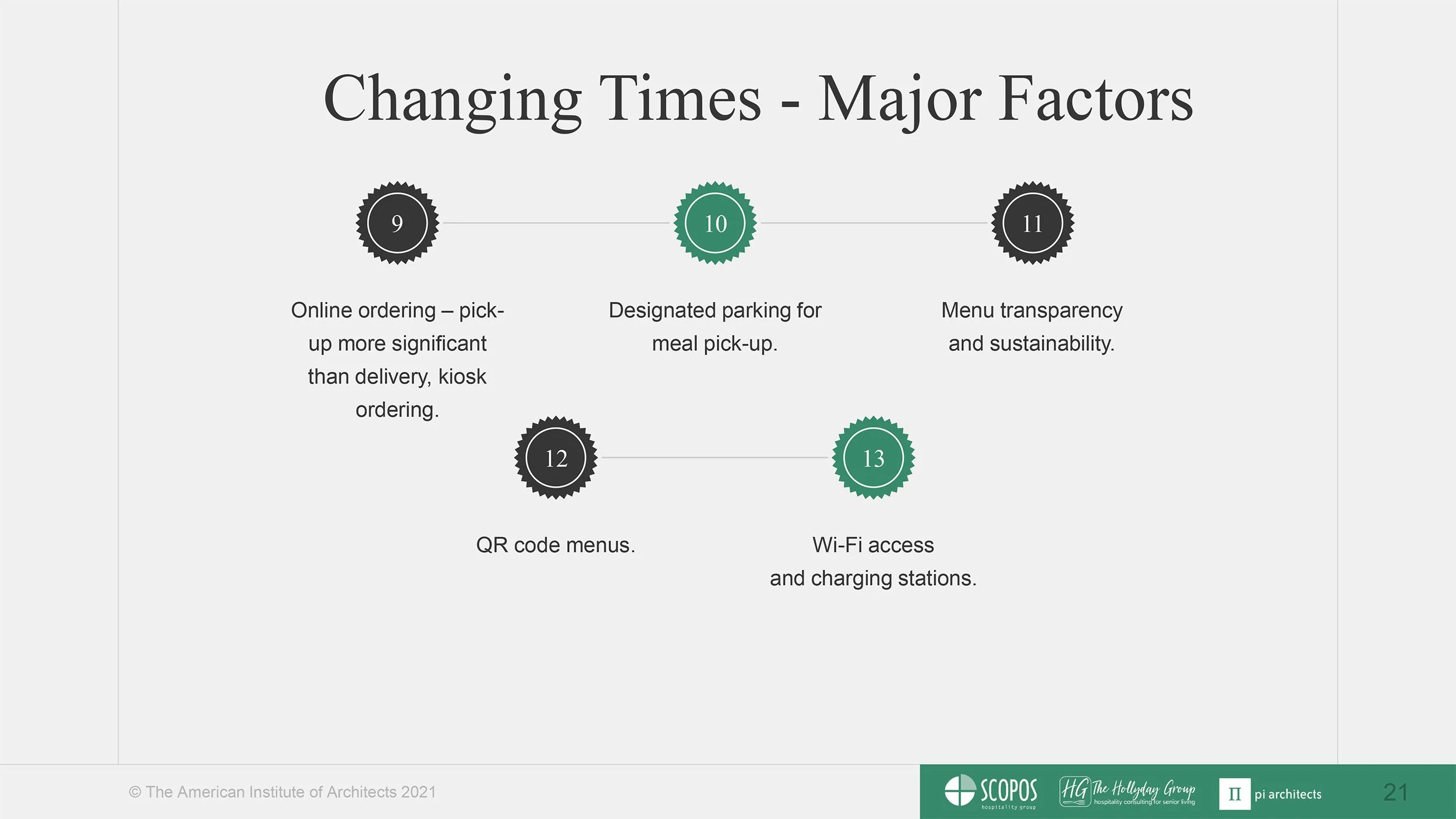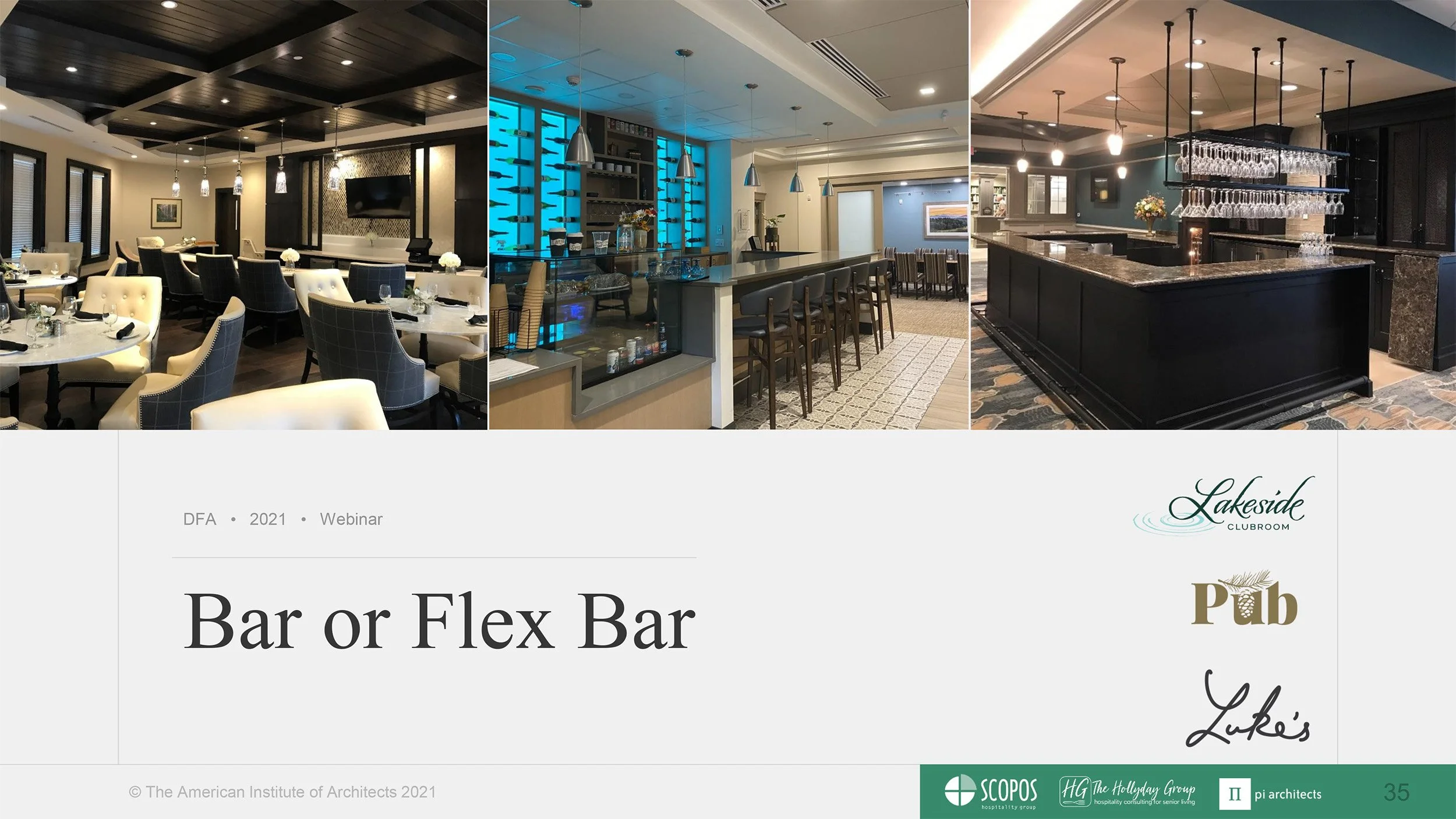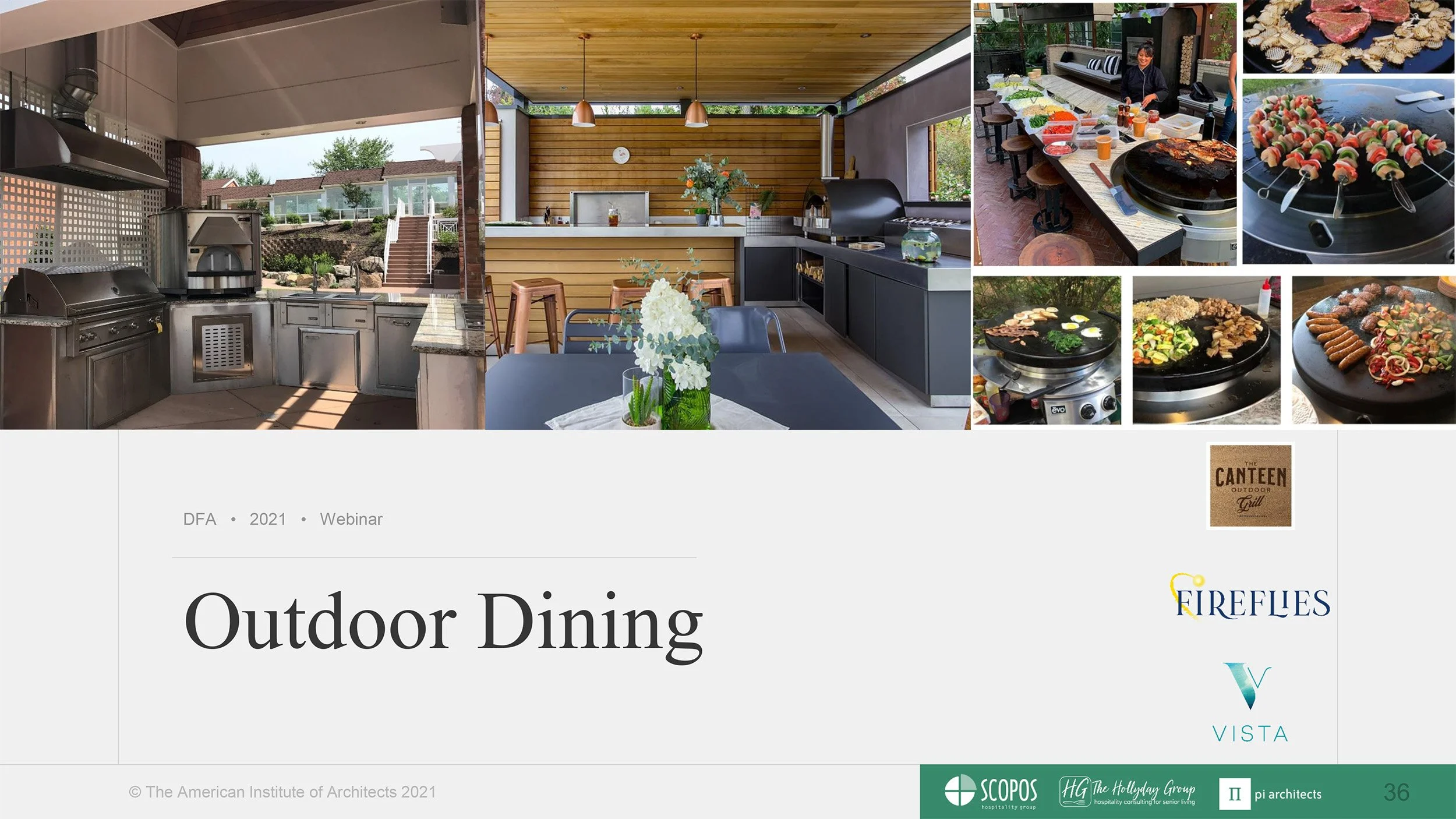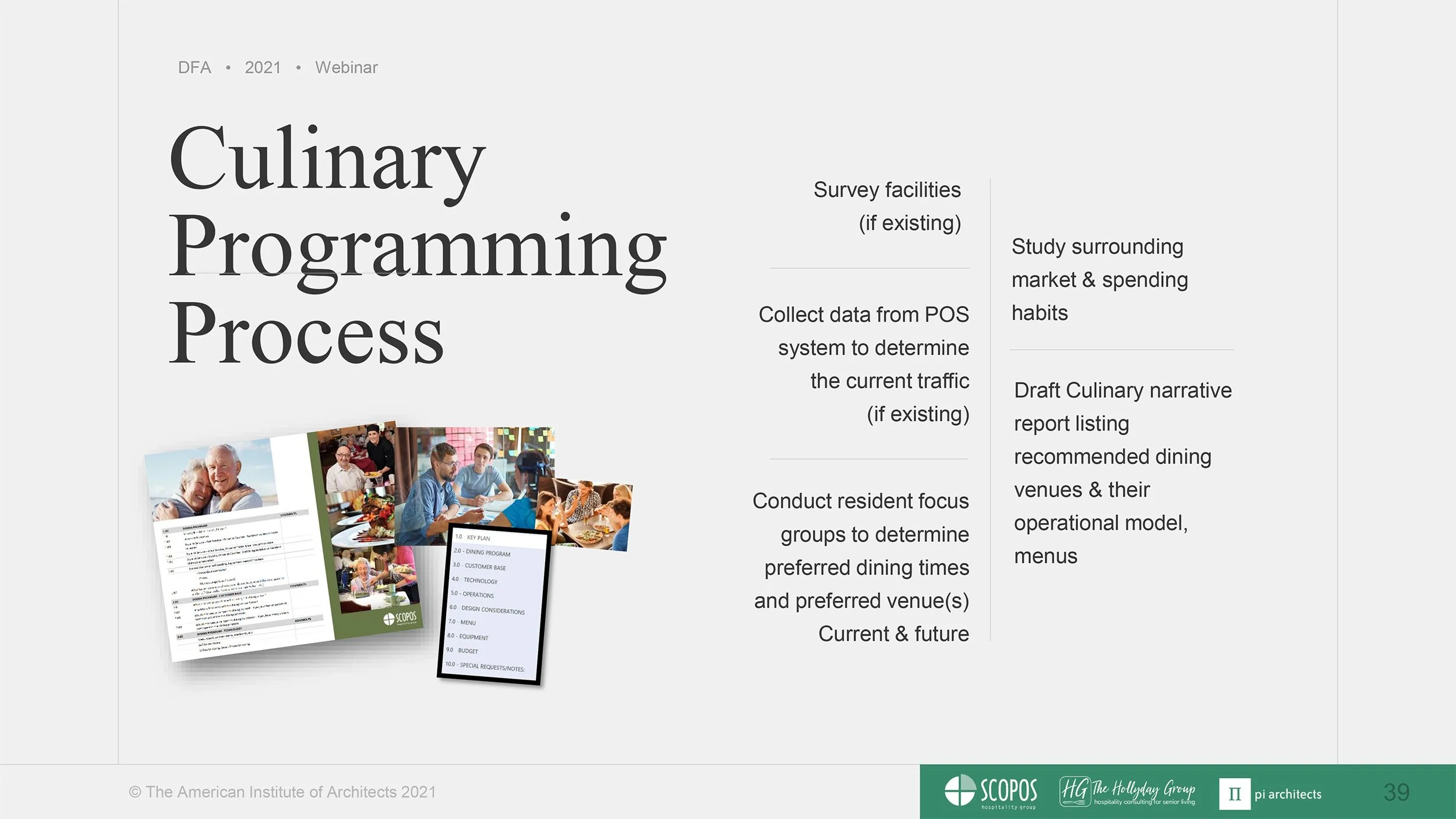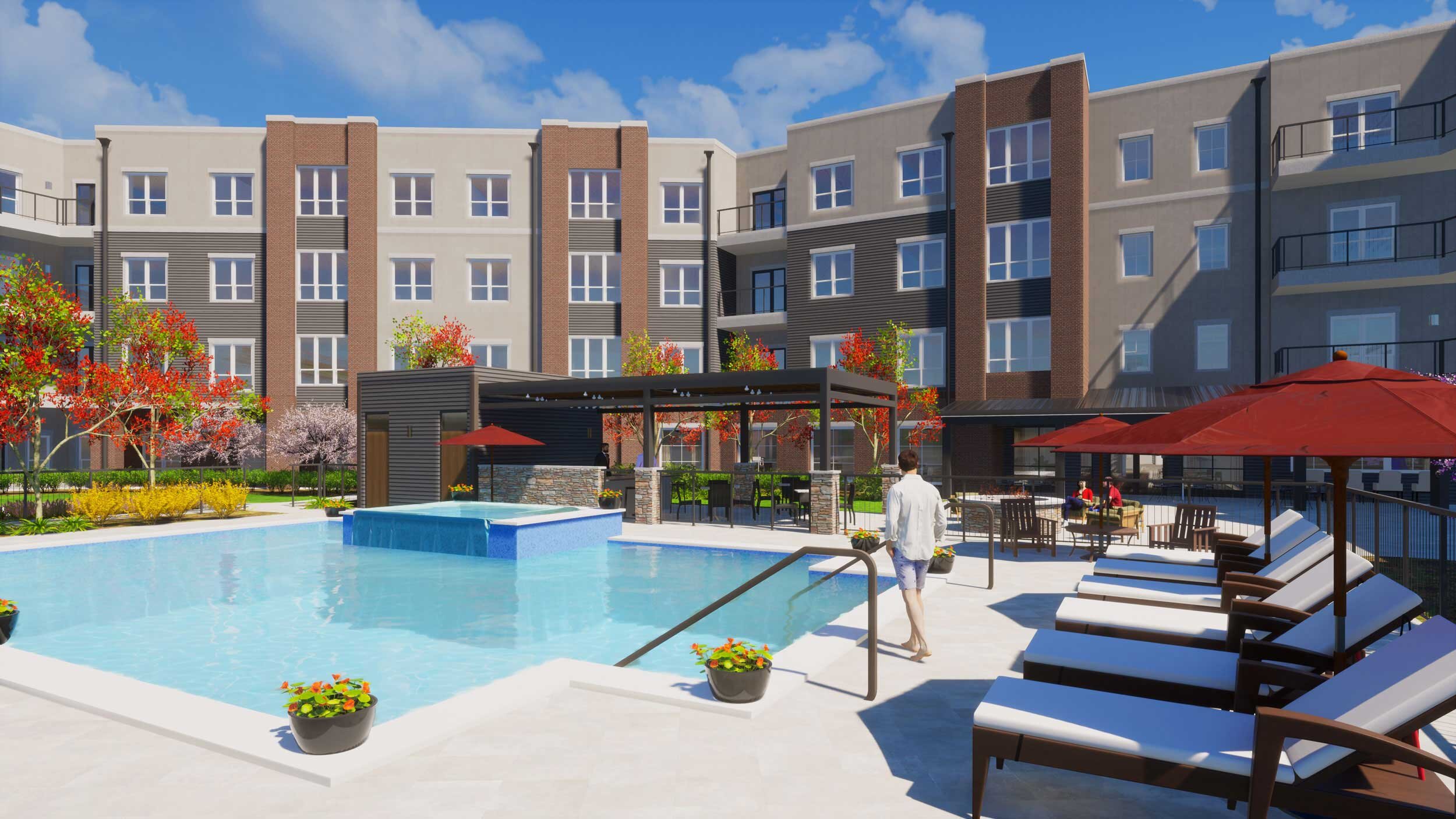Attract Residents, Staff, Accolades with Award-Winning Culinary Experiences
A perfect storm is brewing. The senior living industry is in the midst of a revolution, and dining is a key part. The culinary program is at the heart of the hospitality experience for any community. First impressions matter, and this is one of the initial community elements prospective residents and their families want to see. Your dining options can help you seal the deal or send people looking somewhere else. If you haven’t looked at your dining program recently, what are you waiting for?
In an AIA/DFA webinar late last year, Andrey Teleguz, president of SCOPOS Hospitality Group, suggested, “You can’t start soon enough. You want to get people excited. A well-done dining program can do this and set you apart from the competition.” Schelley Hollyday, the founder of CCRC Hospitality, agreed that you can’t wait. She said, “It is about four years from the initial planning until going live.”
From Under the Stairs to Center Stage
Andrey noted, “Historically, the kitchen was in the basement, which is true of some modern buildings. But that has been changing.” Schelley added, “When I started working in senior living, retirement communities typically had one main dining room, and people would start lining up to eat at 3 or 4 in the afternoon. We’ve moved to multiple venues – pubs, alfresco dining, wine bars, coffee shops, and more.”
“There also is a growing trend toward destination dining – having a room that is, for example, a pizza parlor for a month, then a Spanish restaurant for a month, then Italian,” Schelley said. She added, “In the past year and a half, communities went to 100% take-out/delivery. When things started to open up, staffing shortages and the rise of [new COVID variants] shut them down again.” It is essential to be agile and flexible and enable residents to continue to enjoy quality meals, whatever happens. This means delivery options and innovations such as pick-up/take-out kiosks or windows that make it easy and safe.
Below the Surface
“You need to look at details below the surface,” said Andrey. He discussed the benefits of a ‘ghost’ kitchen that provides support and flexibility between venues. Onsite bakeries, teaching kitchens, self-service marketplaces, and other efforts also are increasingly popular and enable flexibility between spaces. Full-service restaurants are becoming smaller, Andrey said, adding that destination dining can “be a place for menu launching, maybe with a teaching component.”
Schelley said, “Bars or flex bars are the third most common venue, and they should have a branded name. We recommend that they include a food menu, but some communities use it strictly as a gathering place.” She stressed that a bar or pub is a good solution for places that don’t have much space. For example, it can be used as a breakfast bar in the morning and a happy hour/dining space in the evenings. “You can even put a flex bar in the lobby and have a full bar elsewhere on the property,” she said.
Moving forward, watch for a growing use of robotics to combat staffing shortages, However, before embracing this tech trend, it’s important to be aware of changes in floor levels and materials, as well as the need to eliminate doors (or at least keep doors open). While robotics can handle some tasks to reduce staff burdens, their use can create a sound and sight aesthetic challenge.
Outdoor dining is increasingly popular, and Schelley said, it can be a big draw if it’s done right. For instance, she noted, “You need full shade, not just some umbrellas. Instead of basic grills, consider having outdoor chefs’ kitchens for a big experience. And create connectivity to interior spaces.”
“You need to look at the details to determine if things are working or if there are missing elements,” said Andrey. Are things cluttered? Where and how do you bus? How many steps does it take to get staff from the kitchen to the diners and back again? It is important to ask questions up front. “The answers will help you determine if and how the building can accommodate a great culinary program,” Andrey said.
Making Efficient Use of Space, Staff
With both space and staff often in short supply, there are ways to make the best use of both. For instance, food trucks offer a temporary dining outlet that provides flexibility with minimal need for space or staff. Andrey added, “These can drive around the campus and go into the community. It’s a huge recruitment tool as well.”
Schelley said, “You want to survey the existing facility and see what is working well and what isn’t. And you want to study the surrounding markets and find out what is popular in the area.”
Contact us here or call us at 512-231-1910.


